This blast was different from the rest. The blast that removed the area of rock needed for the lower floor’s south west corner didn’t quite do the job due to the rock having all it’s small fractures or “grain” running in just the wrong direction. These fractures ran from north-north west to south-south east. This meant that the area blast left the west wall a couple of feet too far to the east.. In the photo below, the red line marks the problem. We’re looking north, so east is to the right, west to the left. That rock wall on the west side is about two feet too far east.
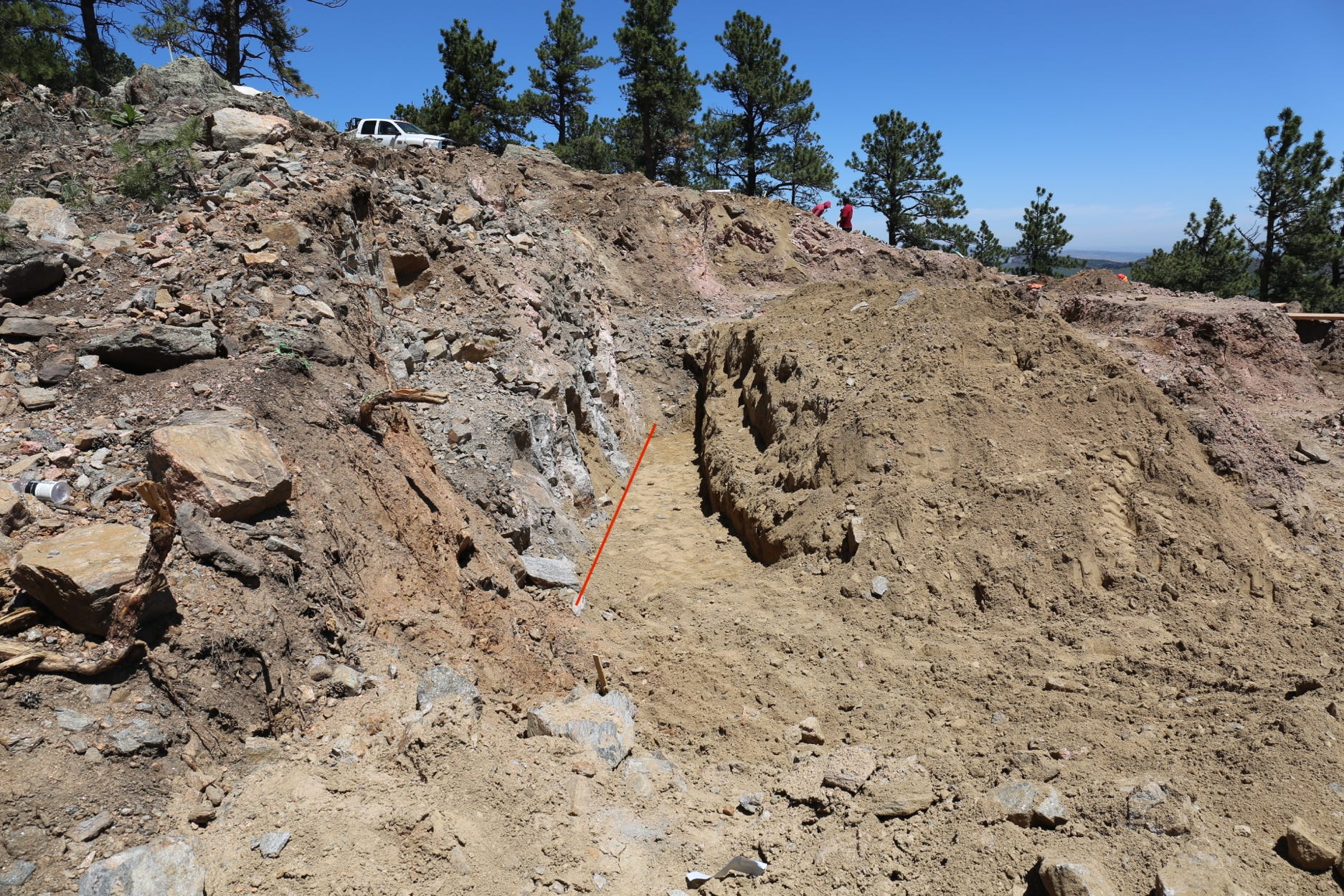
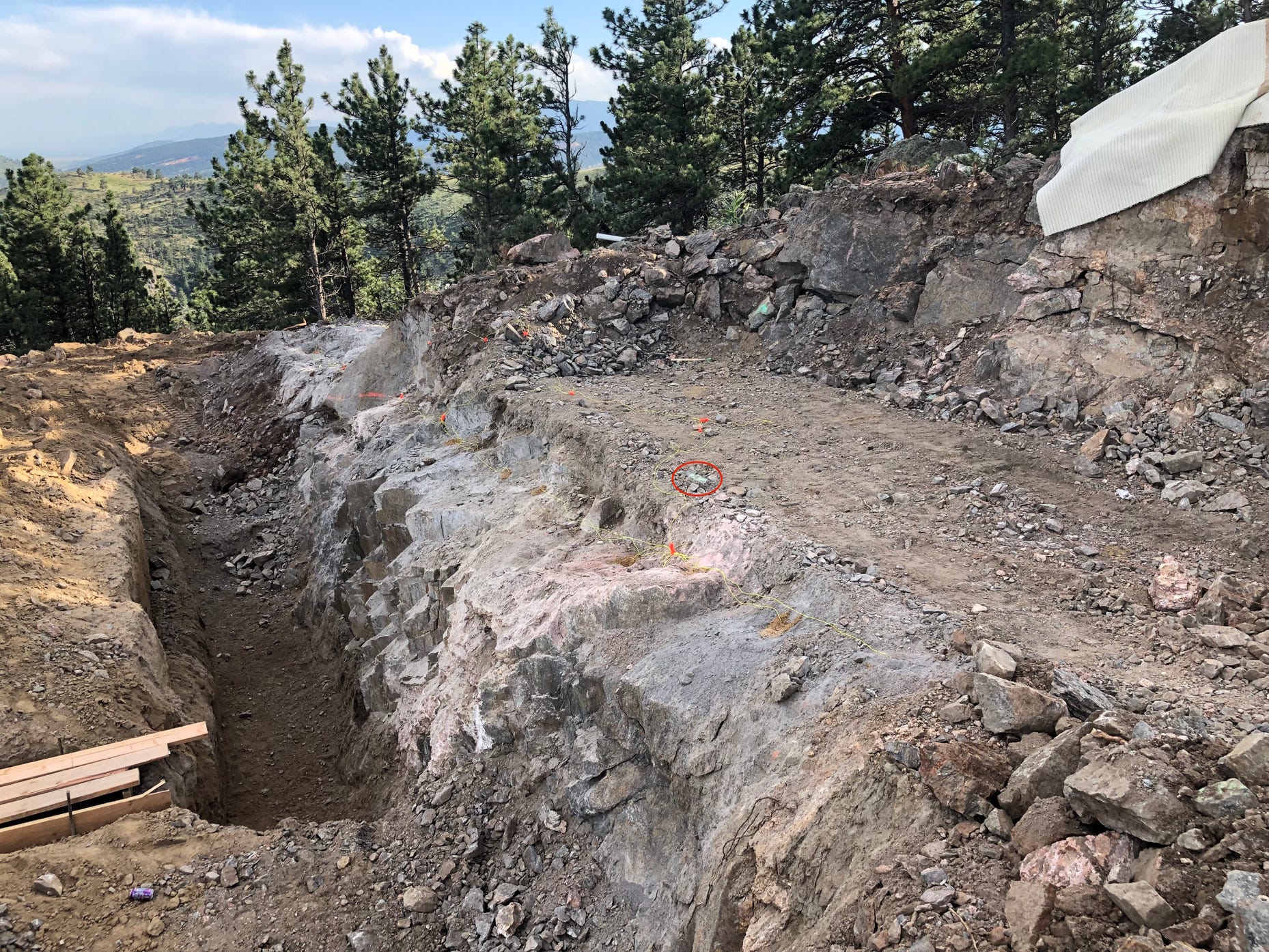
Here we are looking south and can see the top of the wall has been drilled and the holes loaded. To overcome the tendency of the rock to split too far to the east, this shot was hooked up to fire all 12 holes at state allowed minimum intervals. This produces a shear exactly where it’s needed, but, because the material can’t get out of the way, it really throws stuff around!
The actual shot. Martin fired this one!
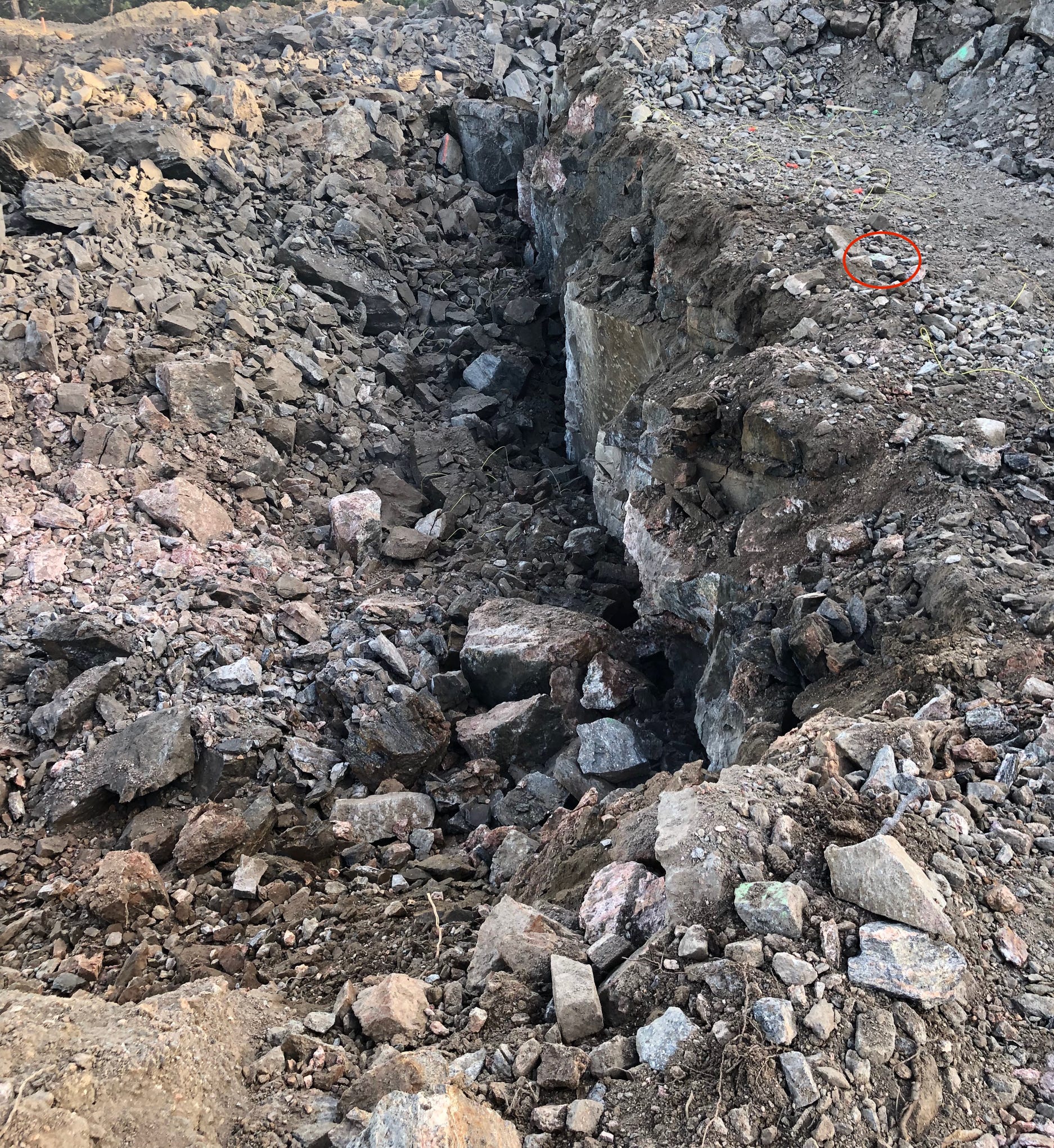
Here’s the aftermath of the shock. As you can see, the rock marked by the red oval didn’t move at all. All of the energy of the blast was directed to the east.
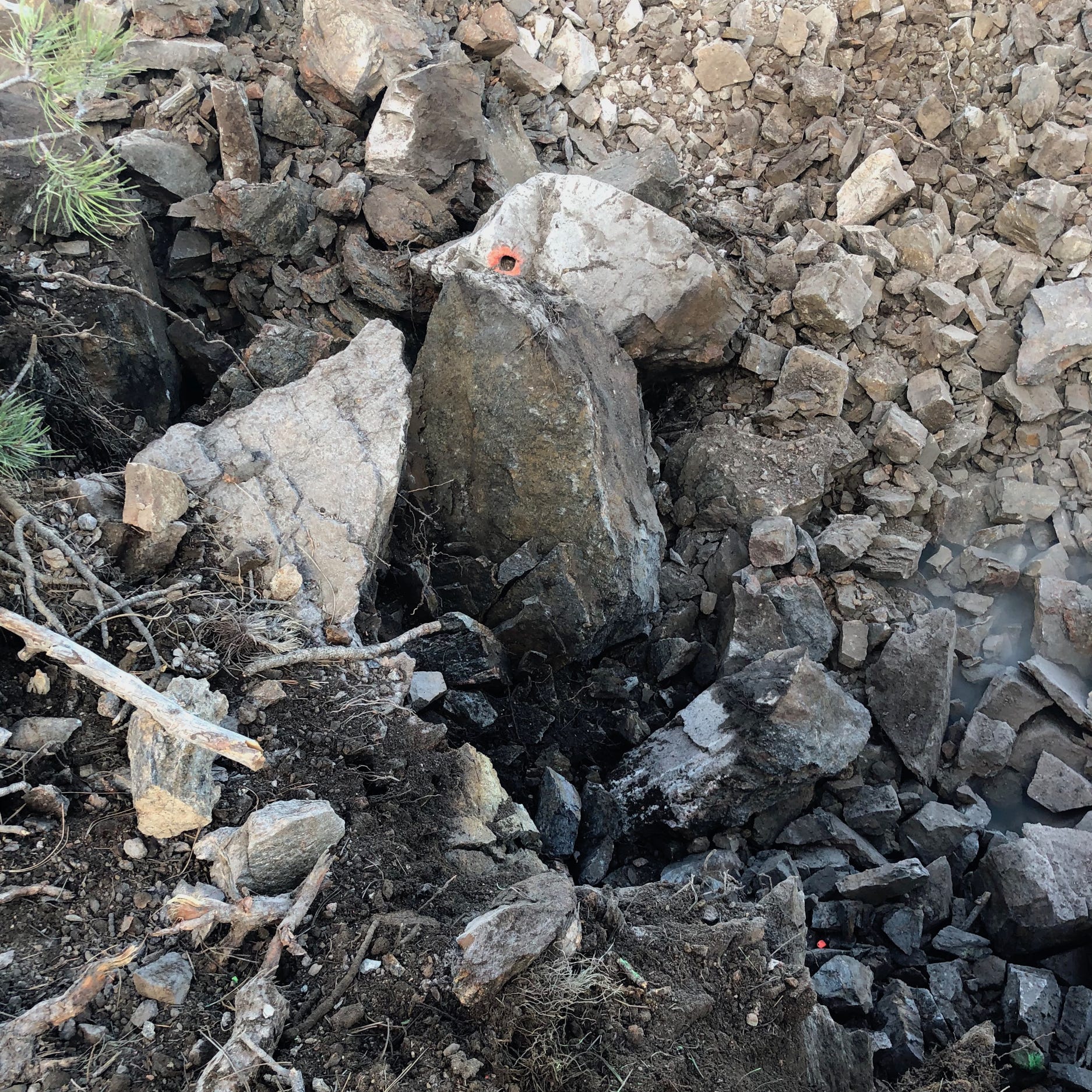
That orange bit of paint with a hole in the middle of it was one of the blasters drill holes. The upper couple of feet of rock is much harder than what’s underneath it, so the blast energy all went out the east side, lower down, leaving this hole intact.
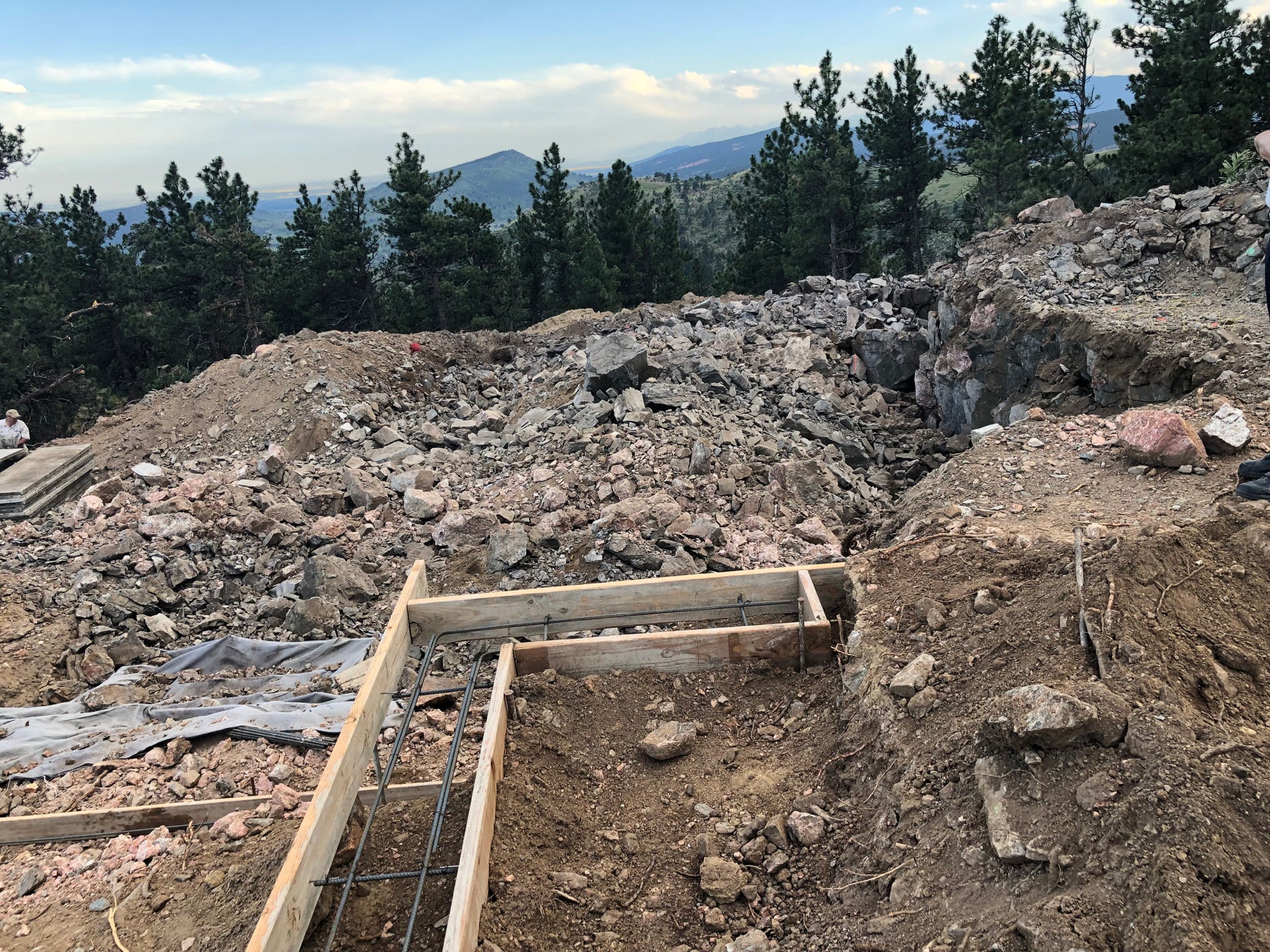
An overview of the site after the blast. Several very large pieces were thrown up and east quite a ways! A plume was thrown out from the middle of the blast as the simultaneous blast wave moved east. Some of the foundation crews forms got clobbered as well.